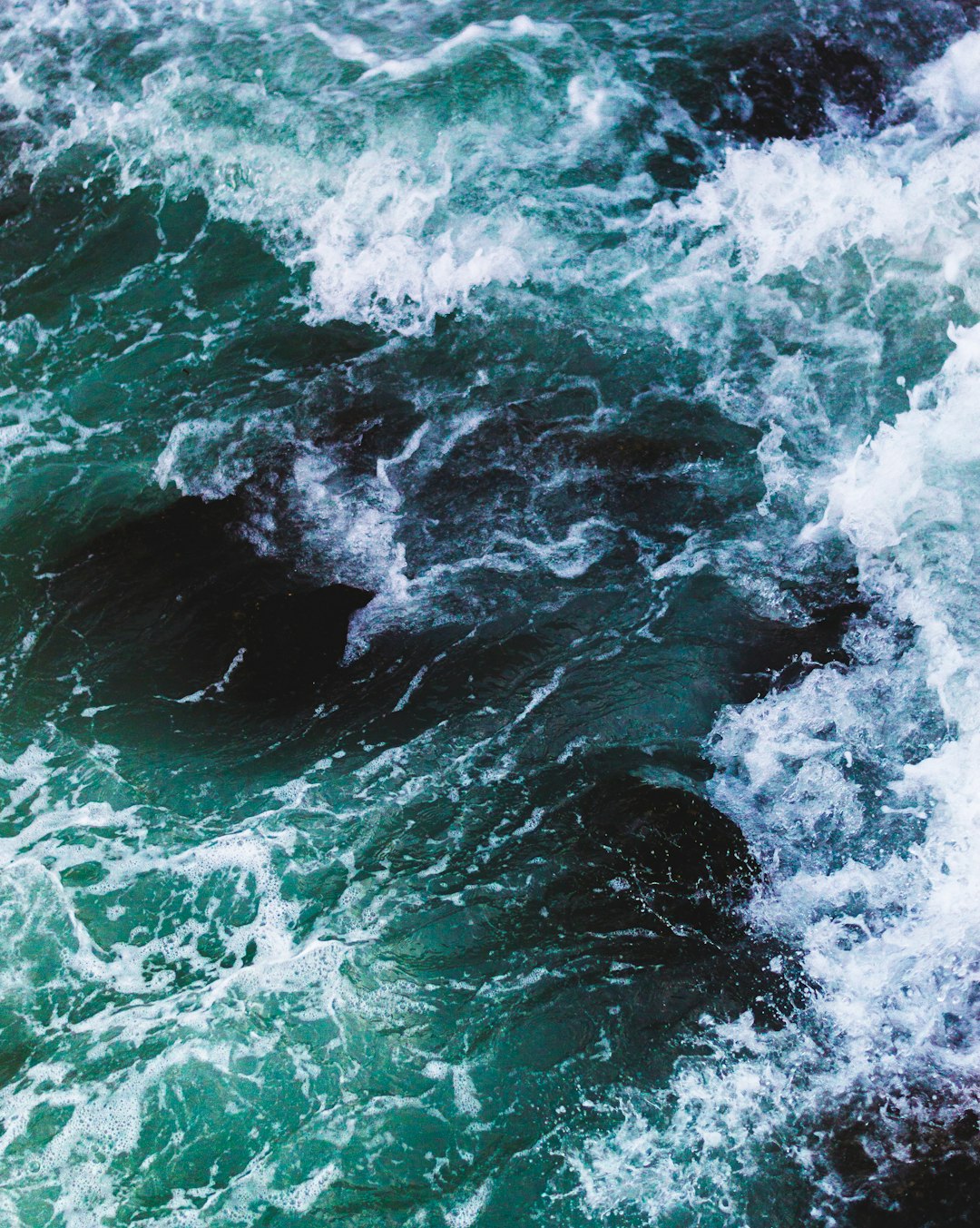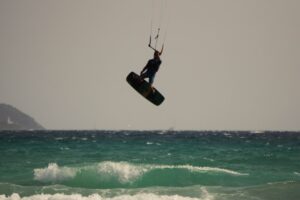Support our hydrofoil educational content for free when you purchase through links on our site. Learn more
Flat Water Foil Start: The Ultimate Guide to Hydrofoil Surfing [2024] 🌊

Quick Answer: Hydrofoil surfing is an exhilarating water sport that allows you to glide effortlessly above the water’s surface, even on flat water. With the right equipment and technique, you can start hydrofoil boarding without the need for waves. Hydrofoil boards, which feature a long hydrofoil underneath, create lift and reduce water resistance, enabling you to reach high speeds and carve through the water with ease. In this comprehensive guide, we’ll walk you through everything you need to know to get started with flat water foil boarding, from the history and mechanics of hydrofoil surfing to the gear you’ll need and the techniques to master. Let’s dive in and discover the exciting world of hydrofoil surfing!
Are you ready to experience the thrill of gliding above the water’s surface? Hydrofoil surfing, also known as foil boarding, is a rapidly growing water sport that offers a unique and exhilarating experience. Whether you’re a seasoned surfer looking for a new challenge or a beginner eager to try something new, hydrofoil surfing has something to offer everyone. In this guide, we’ll take you through the ins and outs of flat water foil start, giving you all the information you need to get started on your hydrofoil surfing journey.
Table of Contents
- Quick Answer
- Quick Tips and Facts
- Background: The Evolution of Hydrofoil Surfing
- What is Hydrofoil Surfing and How Does it Work?
- Gear Up: Essential Equipment for Flat Water Foil Start
- Mastering the Flat Water Foil Start Technique
- Flat Water Foil Start vs. Wave Foiling: What’s the Difference?
- FAQ
- Conclusion
- Recommended Links
- Reference Links
Quick Tips and Facts
Before we dive into the details, here are some quick tips and interesting facts about flat water foil start:
✅ Flat water foil start allows you to hydrofoil surf even in the absence of waves, making it ideal for inland lakes and rivers.
✅ Hydrofoil boards feature a long hydrofoil underneath, which creates lift and reduces water resistance, enabling you to glide above the water’s surface.
✅ Flat water foil start requires a specific technique to generate enough speed and lift to get the hydrofoil board out of the water.
✅ Hydrofoil surfing offers a smoother and faster ride compared to traditional surfing, thanks to reduced water impact and decreased friction.
✅ Flat water foil start is a great way to improve your balance, core strength, and overall surfing skills.
Now that you have a taste of what flat water foil start is all about, let’s delve deeper into the background and mechanics of hydrofoil surfing.
Background: The Evolution of Hydrofoil Surfing

Hydrofoil surfing is not a new concept. It has its roots in the evolution of hydrofoil technology from waterskiing, kneeboarding, and windsurfing. The first hydrofoil board, as we know it today, was invented in 1999 by Mango Carafino, a pioneer in the world of hydrofoil surfing. Since then, hydrofoil surfing has gained popularity worldwide, attracting surfers of all levels with its unique and thrilling experience.
What is Hydrofoil Surfing and How Does it Work?
Hydrofoil surfing is a water sport that involves riding a specially designed board equipped with a hydrofoil underneath. The hydrofoil consists of a mast and a wing-like structure, which creates lift when in motion. This lift allows the board to rise above the water’s surface, reducing drag and enabling the rider to glide effortlessly.
The mechanics of hydrofoil surfing are fascinating. As the rider gains speed, water flows over the hydrofoil wing, creating a pressure difference between the upper and lower surfaces. This pressure difference generates lift, lifting the board out of the water. The rider’s weight and balance play a crucial role in controlling the hydrofoil board and maintaining stability.
Gear Up: Essential Equipment for Flat Water Foil Start
To get started with flat water foil start, you’ll need the right equipment. Here’s a breakdown of the essential gear you’ll need:
-
Hydrofoil Board: The most important piece of equipment is the hydrofoil board itself. These boards are specifically designed to accommodate the hydrofoil underneath and provide stability and control. There are various types and sizes of hydrofoil boards available, so choose one that suits your skill level and riding preferences.
-
Hydrofoil: The hydrofoil is the wing-like structure that creates lift and allows the board to rise above the water. It consists of a mast and a wing, which come in different shapes and sizes. The choice of hydrofoil depends on factors such as rider weight, skill level, and riding conditions.
-
Wetsuit: Depending on the water temperature, you may need a wetsuit to keep you warm and protected. Choose a wetsuit that provides the right amount of insulation without restricting your movement.
-
Leash: A leash is essential for safety and convenience. It keeps you connected to your board, preventing it from drifting away in case of a fall.
-
Helmet: Safety should always be a priority. A helmet protects your head from potential impacts and should be worn at all times during hydrofoil surfing.
-
Impact Vest: An impact vest provides additional protection and buoyancy, ensuring your safety and comfort while hydrofoil surfing.
-
Tow Vehicle or Jet Ski: In flat water foil start, you’ll need a tow vehicle or a jet ski to generate the initial speed required to lift the hydrofoil board out of the water. Make sure you have access to a reliable tow vehicle or jet ski before attempting flat water foil start.
Now that you have an overview of the essential gear, let’s move on to the technique required for flat water foil start.
Mastering the Flat Water Foil Start Technique
Flat water foil start requires a specific technique to generate enough speed and lift to get the hydrofoil board out of the water. Here’s a step-by-step guide to mastering the flat water foil start technique:
-
Find a Suitable Location: Look for a calm and open body of water, such as a lake or a river, with enough space to maneuver and generate speed.
-
Get into Position: Position yourself in the water with the hydrofoil board parallel to the shoreline. Hold onto the tow vehicle or jet ski handle, ensuring a secure grip.
-
Generate Speed: As the tow vehicle or jet ski accelerates, lean back and allow your body to be pulled forward. Keep your weight centered and distribute it evenly on the board.
-
Lift the Board: As you gain speed, gradually shift your weight onto your front foot and engage the hydrofoil. The hydrofoil will generate lift, causing the board to rise above the water’s surface.
-
Find Your Balance: Once the board is out of the water, focus on maintaining your balance. Keep your body relaxed and your eyes fixed on the horizon. Make small adjustments with your body and feet to control the direction and stability of the board.
-
Practice, Practice, Practice: Like any new skill, flat water foil start requires practice. Start with shorter rides and gradually increase your distance and speed as you become more comfortable and confident.
Remember, mastering the flat water foil start technique takes time and patience. Don’t get discouraged if you don’t succeed right away. Keep practicing, and soon you’ll be gliding effortlessly above the water’s surface.
Flat Water Foil Start vs. Wave Foiling: What’s the Difference?
You may be wondering how flat water foil start differs from wave foiling, another popular form of hydrofoil surfing. While both involve riding a hydrofoil board, there are some key differences:
✅ Wave foiling relies on ocean waves to generate speed and lift, allowing the rider to ride the hydrofoil board above the waves. Flat water foil start, on the other hand, doesn’t require waves and can be done on calm bodies of water.
✅ Wave foiling requires advanced wave-reading skills and the ability to navigate through breaking waves. Flat water foil start is more accessible to beginners and doesn’t require wave knowledge.
✅ Wave foiling offers the thrill of riding ocean waves and carving through the surf. Flat water foil start provides a smooth and fast ride, perfect for practicing maneuvers and improving your skills.
Both wave foiling and flat water foil start have their unique appeal and challenges. Whether you prefer the excitement of riding waves or the tranquility of flat water, hydrofoil surfing has something for everyone.
FAQ

Can you foil on flat water?
Absolutely! Flat water foil start allows you to hydrofoil surf even in the absence of waves. With the right equipment and technique, you can generate enough speed and lift to get the hydrofoil board out of the water and glide effortlessly above the flat water’s surface.
Read more about “Can You Use a Foil Board on a Lake? … 🌊”
Can you start a hydrofoil in the water?
Yes, you can start a hydrofoil board in the water. However, flat water foil start typically requires an initial burst of speed to generate enough lift to get the board out of the water. This is why a tow vehicle or jet ski is often used to provide the necessary speed for flat water foil start.
Read more about “Electric Surfboard: The Ultimate Guide to Riding the Waves of Innovation … 🏄♂️”
How do you start a hydrofoil board?
To start a hydrofoil board, position yourself in the water with the board parallel to the shoreline. Hold onto the tow vehicle or jet ski handle and generate speed by leaning back and allowing your body to be pulled forward. As you gain speed, shift your weight onto your front foot and engage the hydrofoil. The hydrofoil will generate lift, lifting the board out of the water.
Read more about “Catch the Wave: The Ultimate Beginner’s Guide to Prone Foil Boarding … 🌊”
Can you hydrofoil without waves?
Absolutely! Hydrofoil surfing is not limited to wave riding. With the right technique and equipment, you can hydrofoil on flat water, making it ideal for inland lakes and rivers. Flat water foil start allows you to experience the thrill of hydrofoil surfing even in the absence of waves.
If you have any more questions about flat water foil start or hydrofoil surfing in general, feel free to reach out to us. We’re here to help!
Read more about “Can you hydrofoil without waves?”
Conclusion

Congratulations! You’ve reached the end of our ultimate guide to flat water foil start. We hope this comprehensive guide has provided you with all the information you need to get started on your hydrofoil surfing journey. From the history and mechanics of hydrofoil surfing to the essential gear and techniques, we’ve covered it all.
Remember, flat water foil start is an exciting and challenging endeavor that requires practice and patience. Don’t be discouraged if you don’t succeed right away. Keep practicing, and soon you’ll be gliding effortlessly above the water’s surface, experiencing the thrill of hydrofoil surfing.
If you’re ready to embark on your hydrofoil surfing adventure, check out our recommended links below for the best hydrofoil boards and gear. And don’t forget to explore our other articles on Hydrofoil Basics, Hydrofoil Equipment Reviews, Advanced Hydrofoiling Techniques, Hydrofoil Training, and Hydrofoil History for further reading and insights.
Now, grab your hydrofoil board, head to the nearest body of water, and get ready to experience the exhilaration of flat water foil start. Happy hydrofoil surfing!
Recommended Links
- 👉 CHECK PRICE on: Hydrofoil Boards on Amazon
- 👉 CHECK PRICE on: Hydrofoil Boards on Walmart
- 👉 CHECK PRICE on: Hydrofoil Boards on Etsy
- 👉 Shop Hydrofoil Boards on: Brand Official Website




